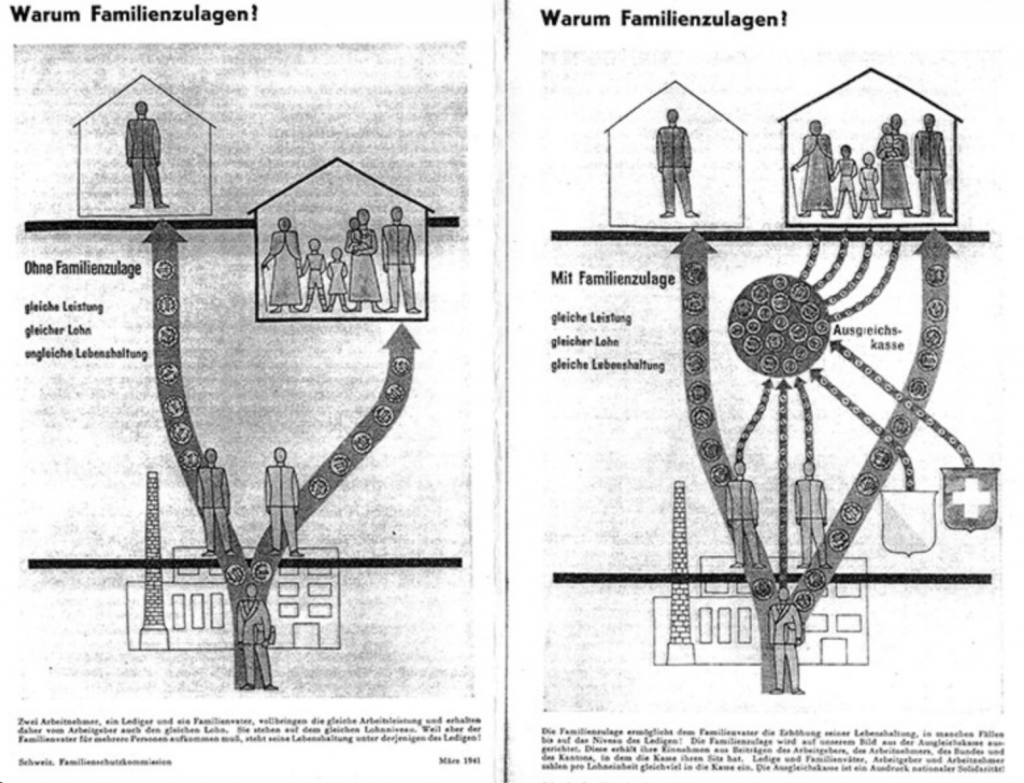While perusing welfare state websites today (one of my major hobbies), I happened up this lovely graphic from Switzerland.

The title of the graphic is “Why Family Allowances?”
The first panel shows two workers who are employed at the same factory and who receive the same wages. One of the workers goes home to a household that they live alone in. The other worker goes to a household that they live in with a grandmother, a wife, and three kids. The point of this panel is to show that two workers with identical wages actually wind up with vastly different standards of living depending on how many dependents they must stretch their wages across. On a per-person basis, the single worker living alone has six times the income of the worker living with the three kids, wife, and grandmother.
The second panel introduces an Ausgleichskasse (equalization fund) in the middle of the graphic. The fund gets money from taxes levied on each worker and their employer as well as contributions from what appears to be central and local governments (I assume that’s what those symbols on the middle-right mean). Then it pays out money to each dependent. In this case, that likely means an old-age pension for the grandmother, child allowances for each kid, and (let’s say) paid leave for the wife as she appears to be caring for a very young child. These payments help to equalize the condition of the two households and two workers, something that wages could never do.
This graphic is typical of the way people used to talk about the welfare state in the earlier parts of the 20th century. There is a recognition that the factor income system (wages for workers and profits for owners) creates intolerable inequalities and poverty, not just because wages are too low or too unequal while profits are too high, but also because a large chunk of the population receives no factor payments. The unequal distribution of this factorless population across households — some households have lots of dependents while others have none — means that the nation is doomed to high inequality unless a system of welfare incomes is put into place.
Notice that the graphic makes no gesture towards “the poor” or “low-wage workers” or other similar kinds of groups. What entitles the grandmother, the kids, and the wife caring for a newborn to income is not that their household is destitute, which it may not even be. Instead, what entitles them to it is that they exist and cannot receive income from the market and thus need non-market income for egalitarian purposes.
At some point this old style of talking about the welfare state seemed to give way to the idea that the welfare state exists for the poor and for those with low wages. You may think this new focus would mean a welfare state that at least created a much higher income floor, even if it no longer did much to attenuate interfamily inequalities higher up the wage scale. In reality, it seemed only to lead to the creation of a complex and dysfunctional welfare state that neither created a high income floor nor tackled horizontal inequalities while inviting endless debates about whether these target populations (“the poor” and “low-wage workers”) would be better served by tough love, education, and wage subsidies.